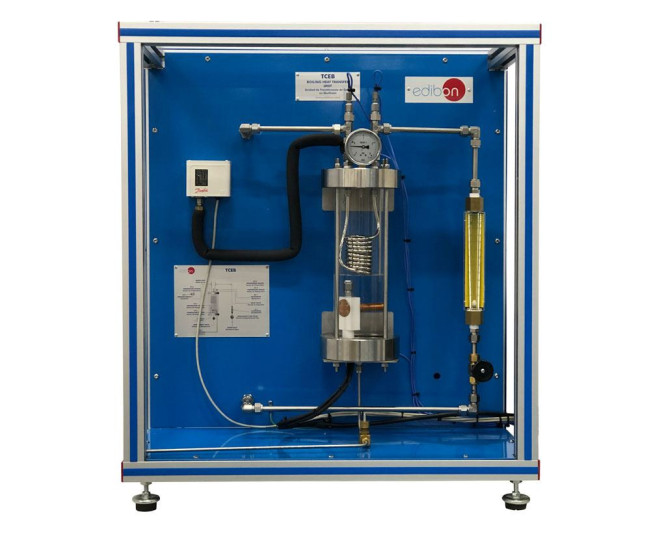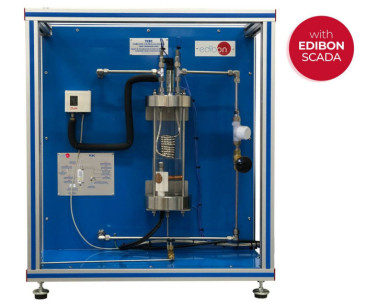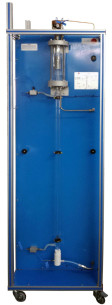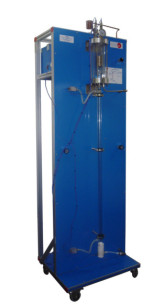The Boiling Heat Transfer Unit, "TCEB", consists of a heating element horizontally mounted inside a vertical glass chamber submerged in coolant. This heating element is connected to a cylindrical copper sleeve in contact with the coolant. Attached to this conductive cylinder there is a contact temperature sensor , which will measure the temperature of the hot surface. On the other hand, there is a second temperature sensor , which measures the temperature of the coolant.
The electric power consumed by the heating element is controlled from the Electronic console and measured by a wattmeter.
The condenser is located at the upper end of the chamber. It is a nickel plated copper coil shaped tube through which cooling water flows. The coil condenses the vapor generated by the heating element and the liquid formed returns to the bottom of the chamber for re-evaporation.
The heat transferred can be obtained thanks to two temperature sensors, located at the water inlet and outlet of the coil, which together with a flowmeter allows to obtain the heat given to the water by the coolant.
The unit includes a manometer that indicates the pressure in the condenser , a relief valve for the elimination or input of air in the chamber and a low pressure switch as safety control of the pressure.
 Preferências de cookies
Preferências de cookies







